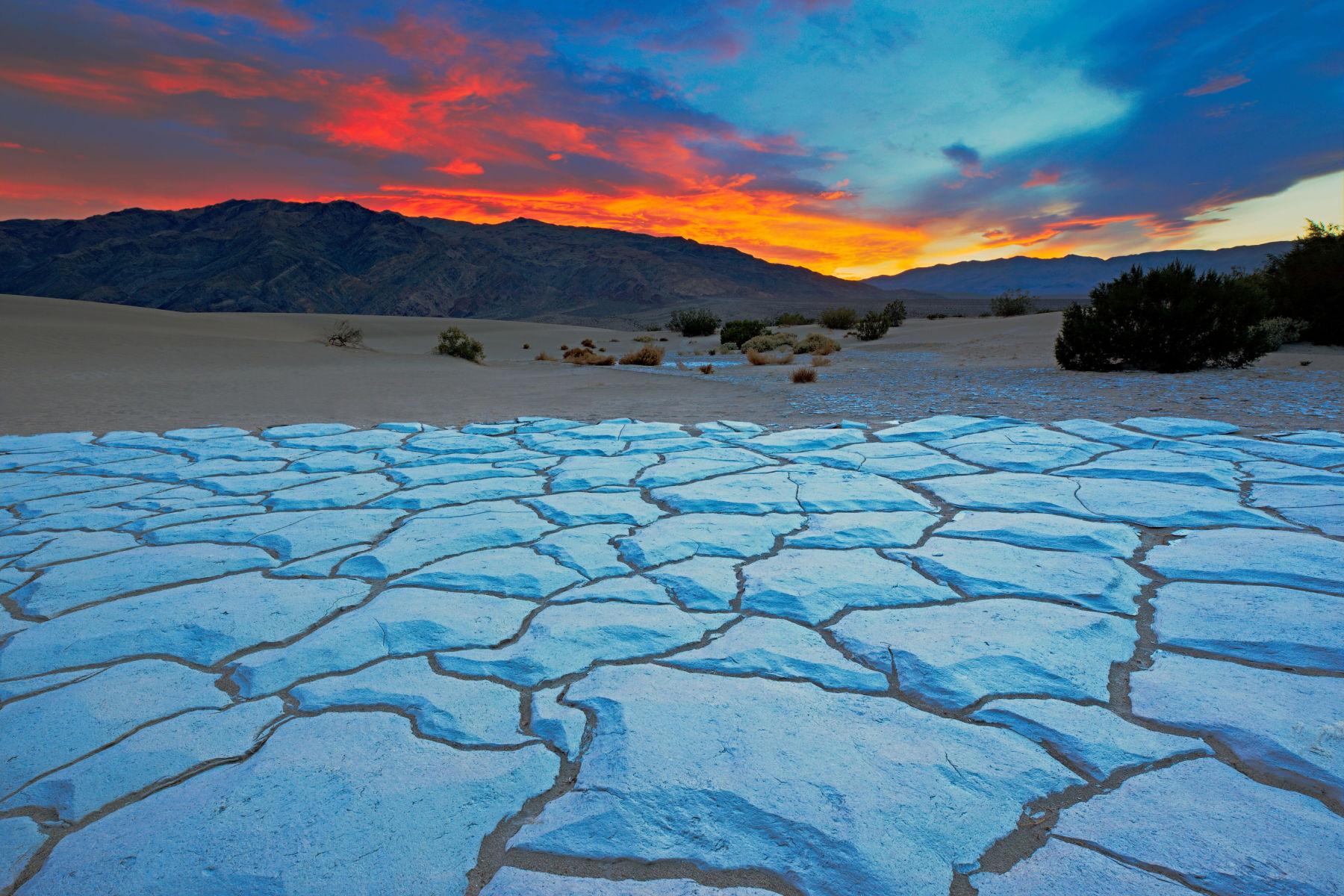
Article Summary: Death Valley National Park Facts
Death Valley National Park Facts! In this article, we provide you with 15 amazing facts about one of America’s most magnificent national parks.
More Than Just Parks is your one-stop-shop when it comes to learning everything you’ll need to know about America’s national parks. We’ve got expert guides, beautiful photos, helpful tips, breathtaking films and so much more.
I’ve been to so many of these amazing places since retiring from teaching in 2018. Did I mention that I taught history? I spent a lifetime teaching about the history behind some of these natural wonders. Then I got to see them firsthand.
And now I’m sharing some of the incredible stories about these beautiful places with you. It doesn’t get any better than that!
More Than Just Parks takes a deeper dive with its national park facts. We’ve done our homework so that you’ll get more than you bargained for.
To get you excited about planning your next visit, in this article we’re covering 15 fascinating facts about Death Valley National Park.
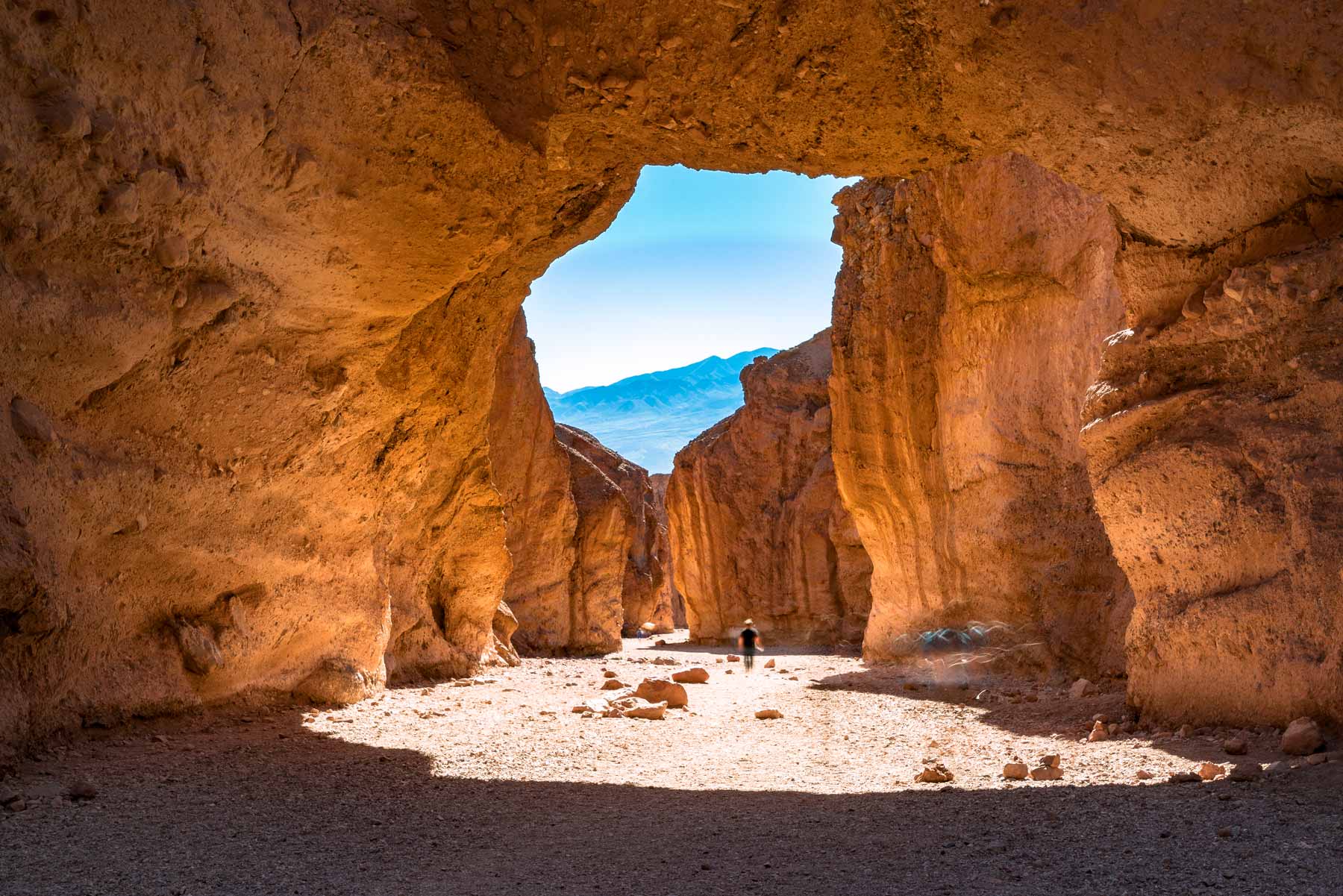
Table Of Contents: Death Valley National Park Facts
Death Valley National Park Facts
- Facts About Death Valley National Park
- Death Valley National Park Facts
Facts About Death Valley National Park
Some Basic Facts About Death Valley National Park
Death Valley National Park is a national park located in the states of California and Nevada. It covers an area of 3,373,000 acres and is known for its extreme desert climate, stunning views, and unique geological formations.
The park is home to a number of unique geological features, including the Badwater Basin, which is the lowest point in North America at 282 feet below sea level, and the Devil’s Golf Course, which is a field of jagged salt crystals that rise up from the ground. The park is also home to a variety of plant and animal life, including Joshua trees, desert tortoises, and bighorn sheep.
In addition to its natural beauty, Death Valley National Park offers a range of recreational activities, including hiking, rock climbing, and photography. The park also offers guided tours and ranger-led programs, which provide visitors with the opportunity to learn more about the park’s natural and cultural history.
Death Valley National Park is a popular destination for visitors, with millions of people visiting each year to enjoy its natural beauty and recreational opportunities.

“This was the desert, everything all at once, whether it was needed or not.
-James Anderson
What survived had learned to save, live carefully, and keep a low profile, even appear to be dead for long periods. Perseverance and patience.”
Here Are Some Basic Facts About Death Valley National Park
- Location: California
- Acreage: 3.373 million acres
- Visitation: Death Valley National Park welcomed 1,146,551 visitors in 2021.
- Elevation: Death Valley is the lowest point in North America.
- Annual Precipitation: Death Valley typically gets 2.20 inches of rainfall annually.
- When Did It Become A National Park? Oct. 31, 1994
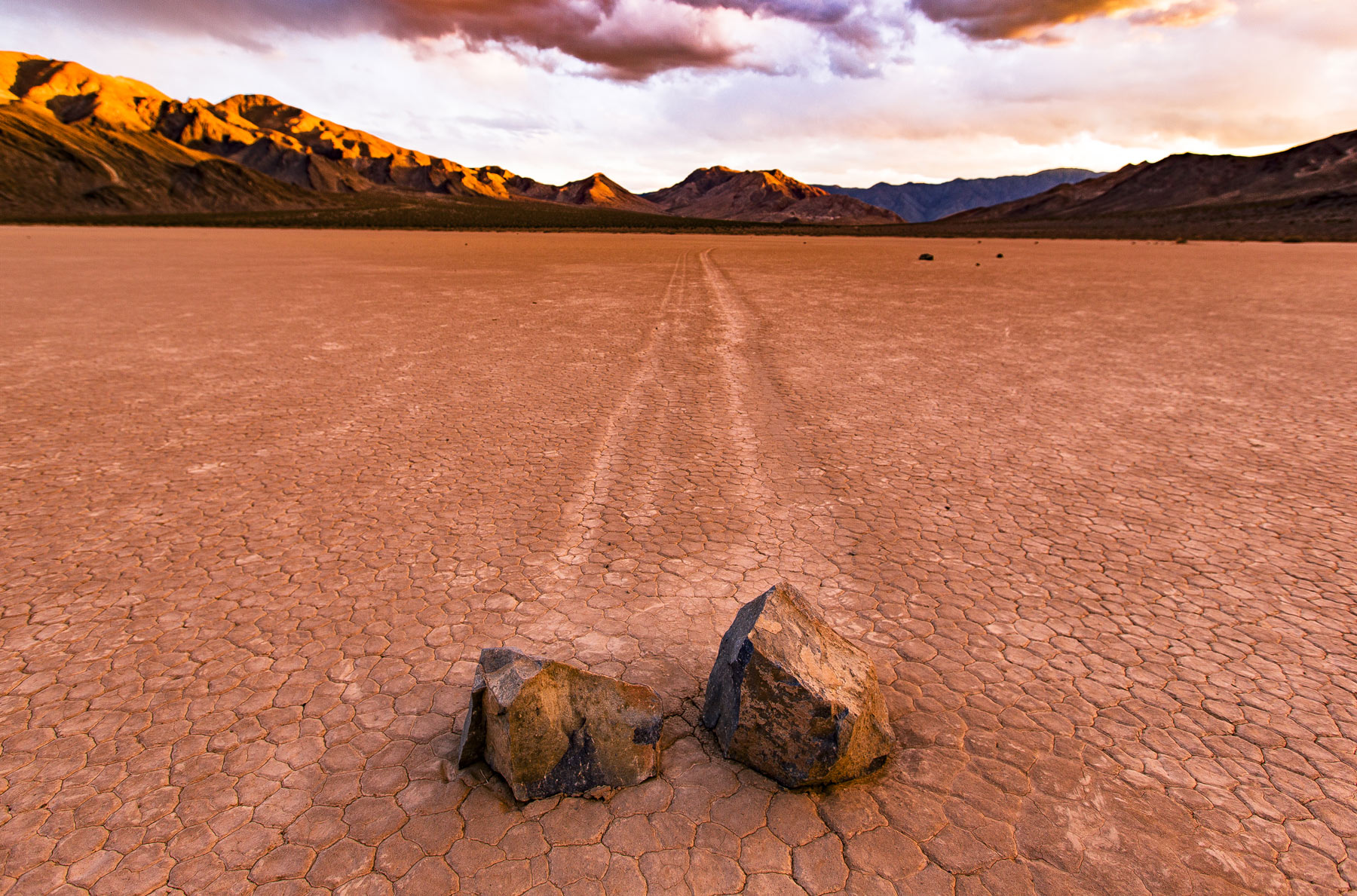
RELATED: Death Valley National Park
Death Valley National Park Facts
Top 5 Death Valley National Park Facts
1. Death Valley Was Inhabited By Native Americans
The land that is known today as Death Valley National Park was inhabited by Native Americans (most recently the Timbisha Shoshone around 1000AD) prior to the arrival of Europeans.
The Timbisha (“rock paint”, Timbisha language: Nümü Tümpisattsi) are a Native American tribe federally recognized as the Death Valley Timbisha Shoshone Band of California.
According to the National Park Service, they hunted and followed seasonal migrations for harvesting of pinyon pine nuts and mesquite beans with their families.
To them, the land provided everything they needed and many areas were, and are, considered to be sacred places.
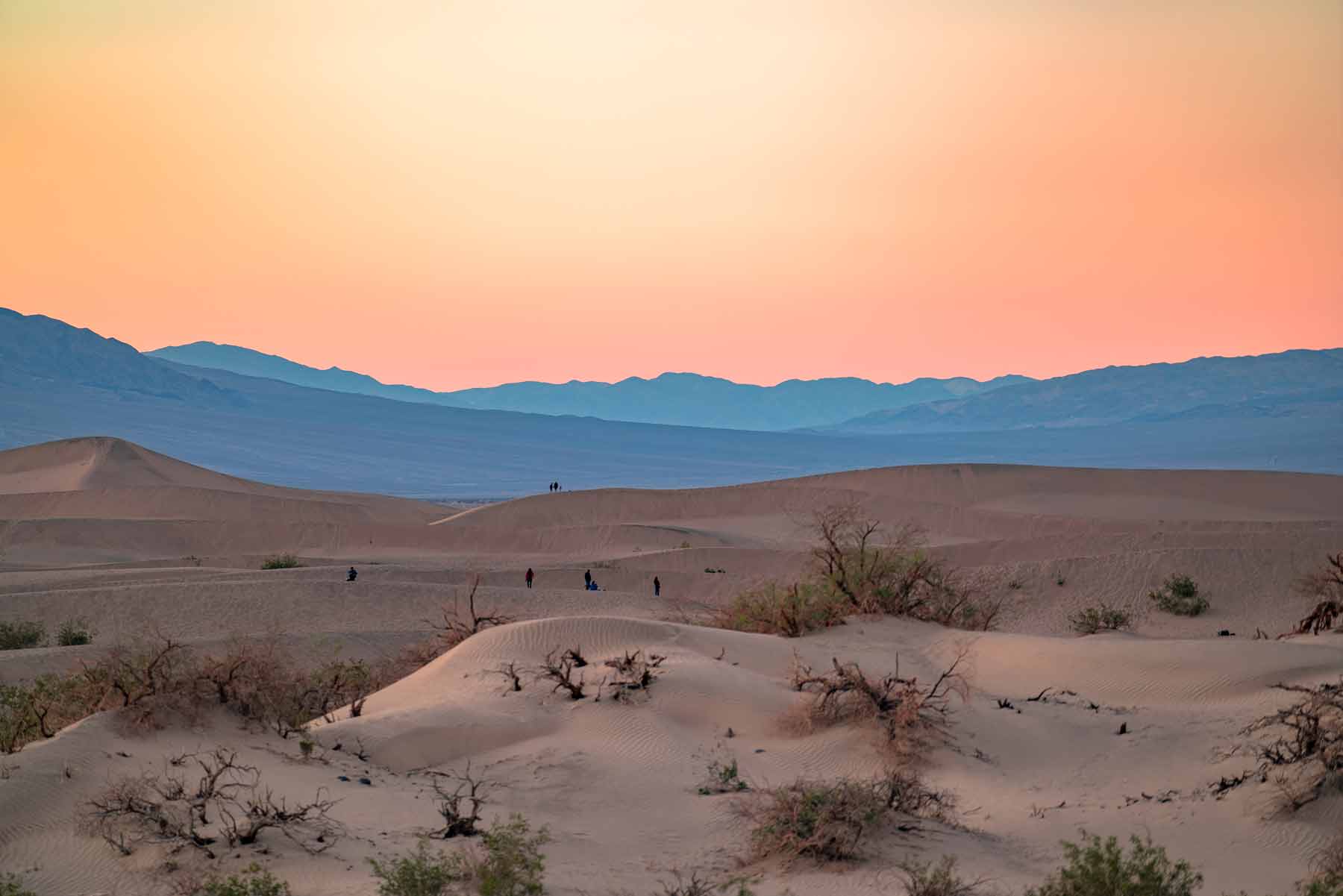
2. A Famous Explorer Visited Death Valley
Another one of my favorite Death Valley National Park Facts is that, early in 1844, during his second exploration of the Far West, Captain John C. Fremont and 39 of his fellow explorers traversed Death Valley’s perimeter.
In the 1840s, Frémont led several expeditions to explore the western territories of the United States. He produced maps and reports on the geography, resources, and potential settlement of the region, which helped to promote westward expansion.
During the Mexican-American War (1846-1848), Frémont played a key role in the conquest of California. He established a military government in the region and was later appointed as the first governor of California.
Frémont was also involved in politics. He was the first presidential candidate of the Republican Party in 1856, running against Democrat James Buchanan and American Party candidate Millard Fillmore. Although he did not win the election, his campaign helped to establish the Republican Party as a major political force in the United States.
In addition to his accomplishments, Frémont was also a controversial figure. His actions in California were seen by some as heavy-handed, and he was court-martialed during the Civil War for insubordination. However, his legacy as an explorer and early advocate of western expansion remains an important part of American history.
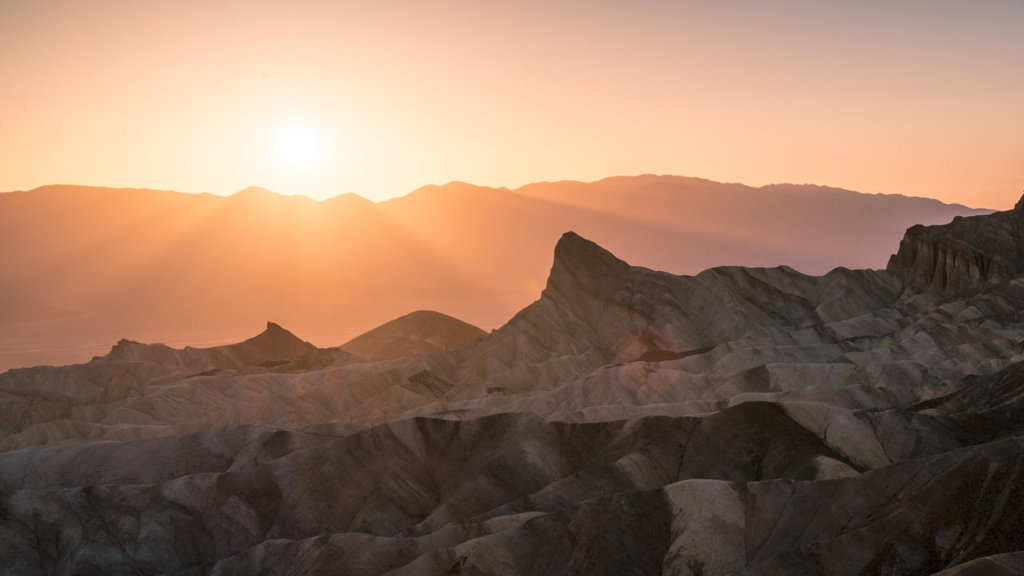
CHECK OUT: 20 BEST California National Parks-Ranked
3. Death Valley Got Its Name From A Group Of Lost Goldminers
Every place has a story to tell. The story of how Death Valley National Park got its name is a particularly fascinating one of the Death Valley National Park Facts.
Our story begins with the discovery of gold in the Sacramento Valley of California in early 1848. Once gold was discovered at Sutter’s Mill, pandemonium set in as “gold fever” swept across the nation.
The Bennett-Arcane Party were a group of particularly unlucky prospectors who came from the East. Their destination was the Sutter’s Mill area of Northern California.
In those days, folks didn’t have GPS. They made a wrong turn crossing the desert and got trapped in Death Valley.
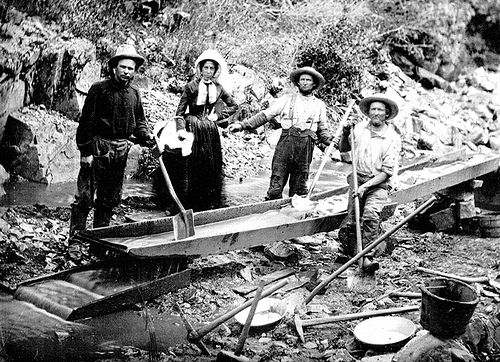
Hoping To Avoid The Same Fate As The Donner Party
After learning about the infamous Donner Party, who had perished on their way to California, this unlucky party took the Old Spanish Trail hoping to avoid the same fate.
Lost and starving, part of the group decided to remain at Travertine Springs while others trekked a grueling 300 miles to the nearest Mission. A month later, they returned with help.
Unfortunately for some of them that help came too late. By the time they arrived, some had already perished in the valley.
As one of the more fortunate survivors managed to escape the valley, he supposedly said on his way out, “Goodbye, Death Valley,” and the name stuck.

4. Death Valley Has Its Own Castle
Among the most unique of the Death Valley National Park Facts is that one of the park’s most interesting features also happens to be one of its most interesting stories.
It’s the tale of Walter Scott who is better known as “Death Valley Scotty.”
As a 14-year old, Scott ran away from his family to join his brothers in Nevada. He held a variety of jobs including one as a roughrider for “Buffalo Bill” Cody’s Wild West Show.
Scott was part showman and part con man. He claimed to have struck it rich in a secret Death Valley Mine and broke a travel record for the fastest time between Los Angeles and Chicago on a Santa Fe Railroad special train.
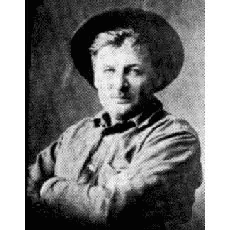
Albert Johnson & Walter Scott
Scotty, also known as Walter Scott, had little luck prospecting for gold in Death Valley. After receiving no results from the fabled gold mine, all of his investors felt that they had been conned and began to back out of their investments.
However, Scotty began to frequent the finest hotels and saloons of California and Nevada, and began his legendary spending sprees.
His final investor was a man named Albert Johnson. While Scotty failed to make Johnson any money, he fell in love with the dry desert climate of Death Valley and decided to live there.
Johnson bought property in Grapevine Canyon and eventually built what became known as Scotty’s Castle.
Scotty became a frequent visitor to the castle and was allowed to live there for his remaining years. He died in January 1954.

5. A Woman Suffragist Helped To Promote Death Valley
Now here’s another one of those fascinating Death Valley National Park Facts. It involved Edna Brush Perkins. She was an active suffragist from Cleveland, Ohio, and an avid travel writer who fell in love with Death Valley.
She organized and lectured for women’s suffrage in Cleveland from 1912 to 1920, and was chair of the Woman’s Suffrage Party of Greater Cleveland from 1916 to 1918.
Perkins also helped found the Women’s City Club of Cleveland in 1917.
She took a break from her political activities to visit Death Valley with her friend Charlotte Jordan, and wrote a book about their journey called White Heart of the Mojave, which was released in 1922. The book describes the difficulties and dangers they faced during their journey.
“We called it “Need for a Vacation,” not knowing that every desire to withdraw from the crowd is a personal assertion and a protest against the struggle and worry, the bluff and banality and everlasting tail-chasing which goes on inside the walls of the stateliest statehouse and the two-room suite with bath. Our real craving was not for a play hour, but for the wild and lonely place and a different kind of freedom from that about which we had been preaching.”
-excerpt from White Heart of the Mojave by Edna Brush Perkins
Top 10 Death Valley National Park Facts
6. Death Valley Featured Its Own Television Series
How many national parks have their own television series? Death Valley did! Among the most unique Death Valley National Park Facts which I came across is that Death Valley Days, which was first a series on the radio, was connected to Death Valley. It was an anthology series featuring true accounts of the Old American West.
Later, it would be adapted for television.
Death Valley Days was originally created in 1930 by Ruth Woodman. The original inspiration for the show was the group of prospectors who perished in Death Valley. Little did anyone know that the show would prove to be one of the most popular westerns on television.
RELATED: Look Familiar? 10+ CLASSIC Television Shows Filmed In The National Parks
One Of The Longest Running Westerns On Television
The program was originally broadcast on radio until 1945. It came to television in 1952 and ran until 1970. The show continued in syndication until August 1, 1975. This made Death Valley Days one of the longest running western television programs in history.
The show’s sponsor was the Pacific Borax Company. The company was famous for its “20 Mule Team Borax” slogan which was the brainchild of its advertising manager Stephen Mather.
This is the same Stephen Mather who would go on to become the first director of the National Park System.
As a matter of fact, this long-running series spanned an incredible 452 episodes. This gives you some idea of just how popular it was even though you probably have never heard of it.

RELATED: Meet The Real Life Batman & Robin Of The National Parks
7. Death Valley Is The Lowest Point In America
Now here’s another Death Valley National Park Fact that I found to be fascinating. Badwater Basin, which is situated at 282 feet below sea level, is not only the lowest point in the U.S., but in all of North America.
The basin is known for its sprawling salt flats. The question is: How did they get there?
Geologists believe that, in ancient times, an inland lake existed where the basin lies today. Since this lake had no access to other bodies of water, salt deposits accumulated which explains those salt flats.
While the lake disappeared, it left behind these amazing salt crystals which are definitely worth seeing.
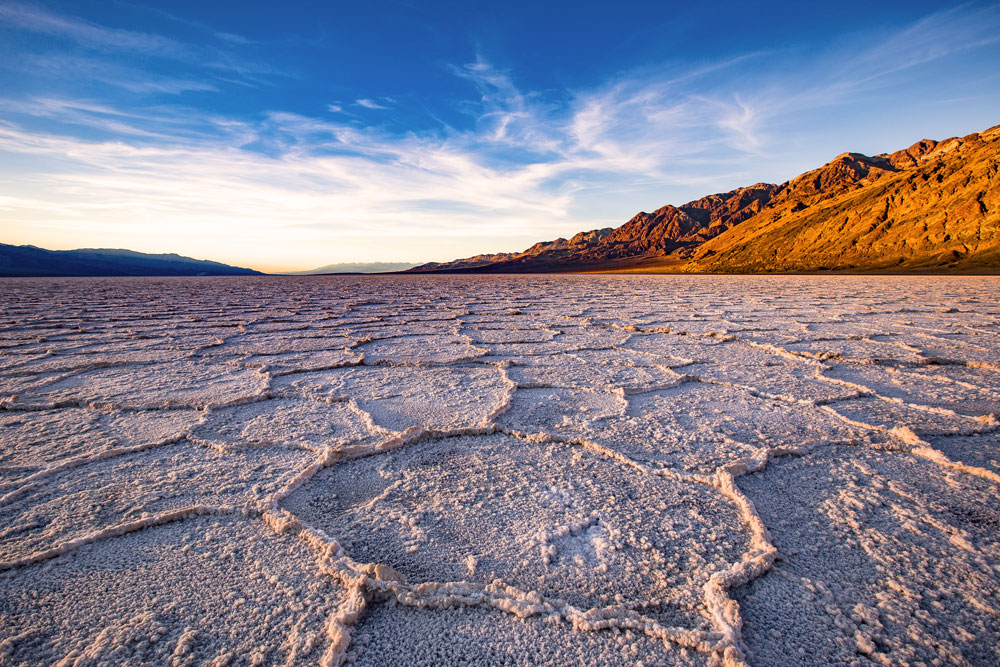
8. Death Valley Is The Largest National Park In The Contiguous U.S.
The Park is 3.4 million acres (or 5,270 square miles). This makes it the largest national park in the Continental US, which is a Death Valley National Park Fact which is very unique.
There are several National Parks in Alaska that are larger, however, including Denali, Wrangell-St. Elias and Gates of the Arctic.
Death Valley is part of the Mojave Desert. It includes five sets of sand dunes, two mountain ranges, one XL volcano crater and one XXL salt basin.
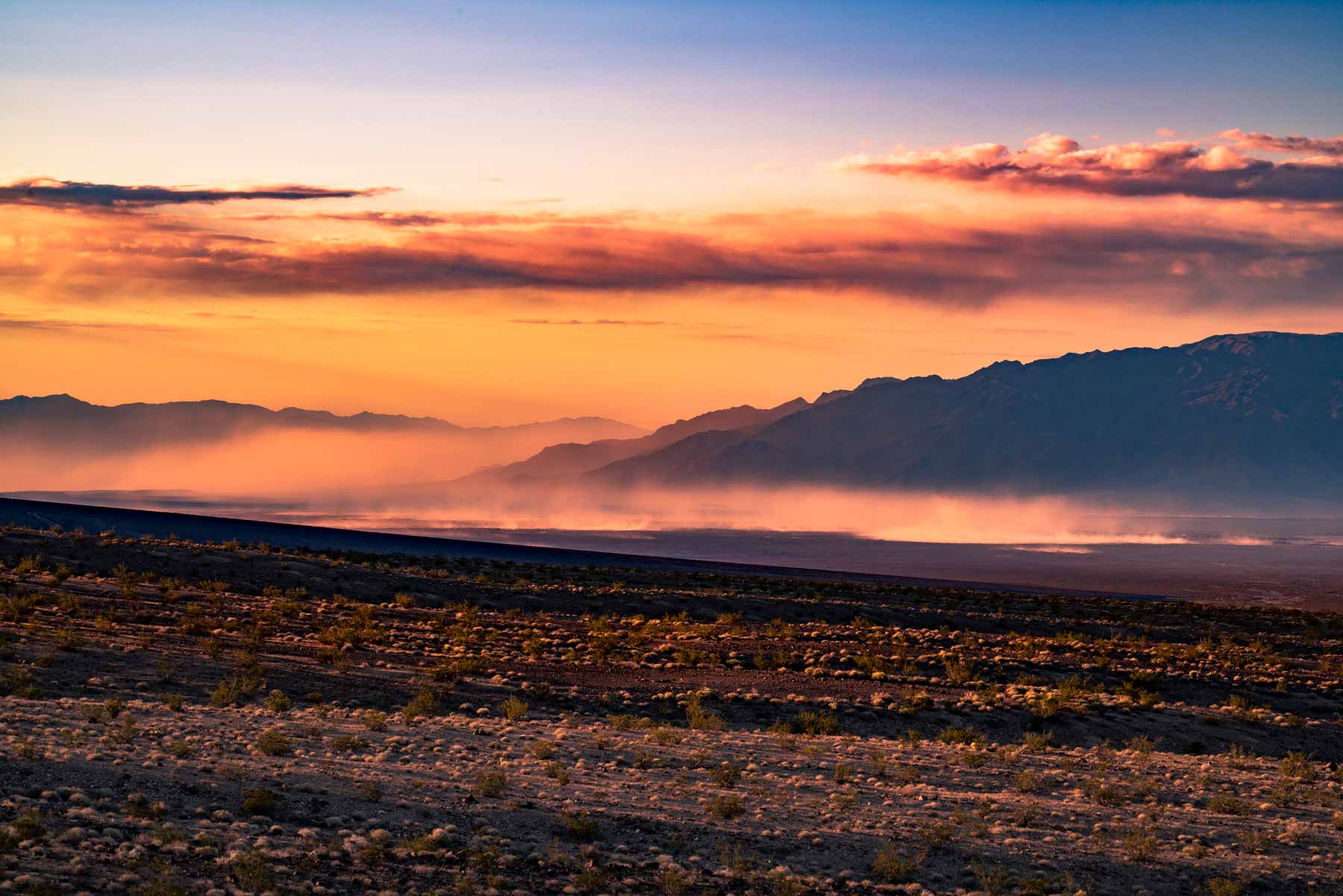
RELATED: 21+ (STUNNING) Things To Do In Death Valley National Park
9. The Park Has Its Own Airport
Believe it or not, Death Valley National Park has its own airport.
It’s called Furnace Creek Airport.
There are no scheduled commercial flights to airports within Death Valley National Park. Pilots with their own aircraft may use the airports, but other than a shuttle service provided for guests of the Furnace Creek Inn & Ranch Resorts, there is no public ground transportation or rental vehicles available from either airport.

10. Death Valley Has One of the Tallest Dunes in North America
Speaking of deserts, Death Valley National Park has the tallest sand dune in California, which is another of those Death Valley National Park Facts that’s simply amazing.
Eureka Dunes are acclaimed as California’s tallest sand dune.
You will find these amazing sand dunes located in the northernmost corner of Death Valley They rise over 680 feet from base to summit. These amazing dunes stretch about 3 miles long and 1 mile wide.
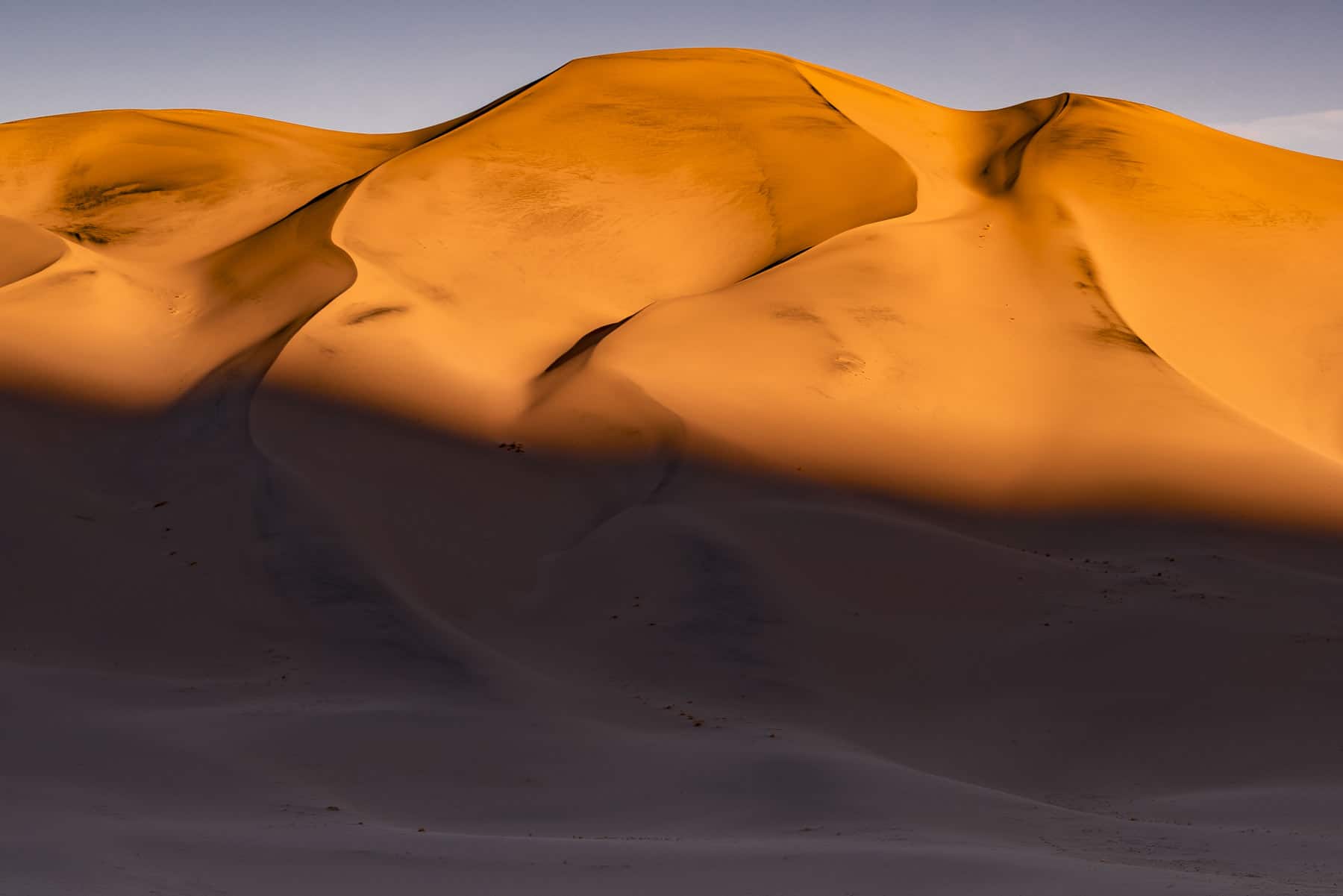
Top 15 Death Valley National Park Facts
11. Death Valley Is The Hottest Place on the Planet
When it comes to remarkable Death Valley National Parks Facts then how about this one: Death Valley holds the record as being the hottest place on earth. On July 10, 1913, a temperature of 134°F was measured at Furnace Creek. Summer temperatures are regularly high, often exceeding 120°F .
What’s even more amazing is that this was the same year Death Valley recorded its lowest temperature. The temperature dipped to 15°F at Furnace Creek on January 8, 1913.
As a matter of fact, Death Valley National Park scorched a world record for high temperatures in September of 2022.
The park’s Furnace Creek hit 127 degrees marking a world record for the hottest temperature ever recorded according to CBS News.
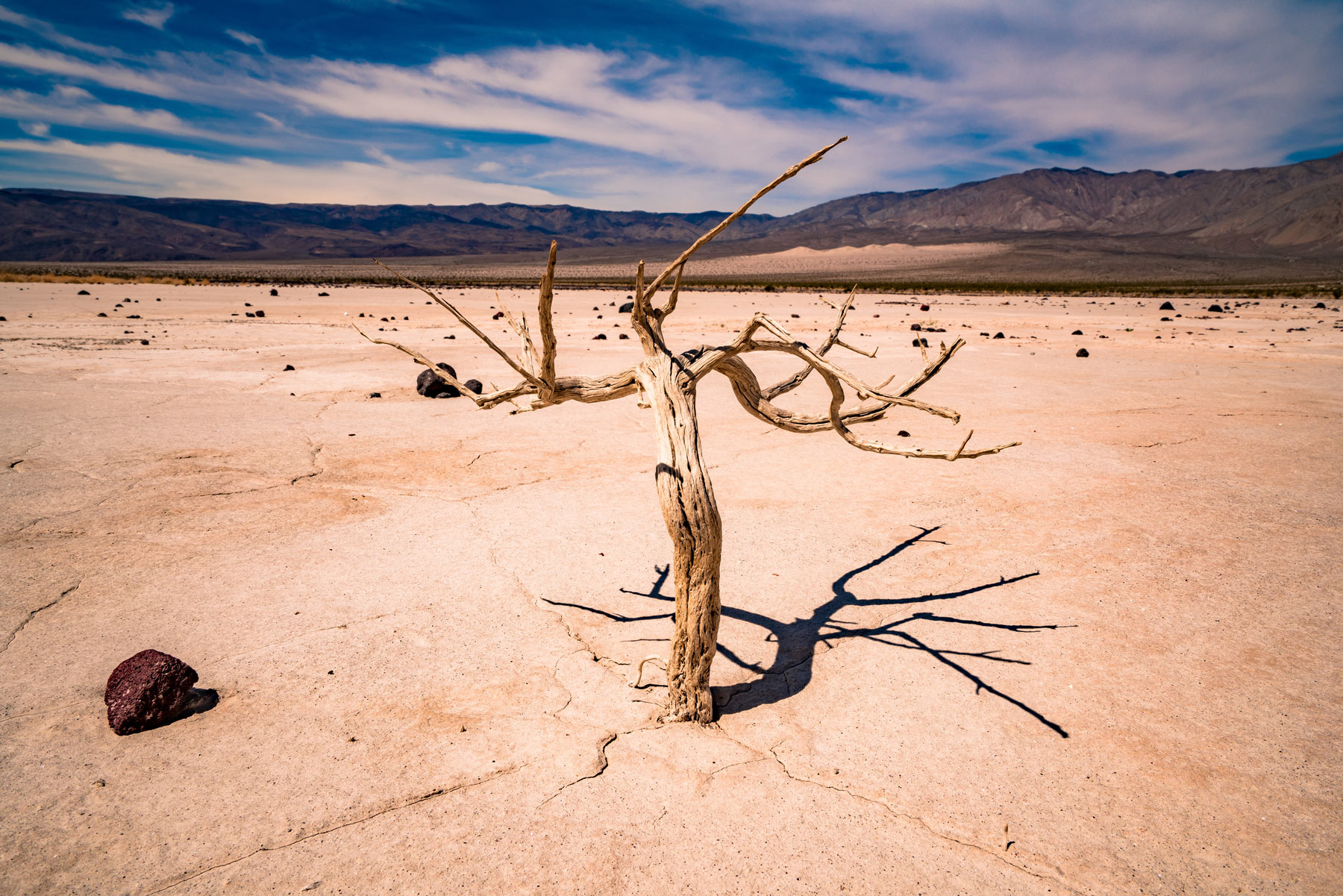
12. Death Valley Was Featured In The First Star Wars Film
If you’re looking for one of the truly remarkable Death Valley National Park Facts then the force may be with you. Or rather it was with George Lucas & Co. when they rewrote the rules of science fiction storytelling.
Star Wars was the most successful science fiction film series of all time. It was second most successful film series of all time.
If you’re wondering which series is number one, it’s the Marvel Comics Superheroes franchise. As Jim Croce once reminded us, “you don’t tug on superman’s cape,” but don’t feel too sorry for George Lucas.
Stars Wars actually began with A New Hope, which was the fourth installment in this highly successful film series. When this film originally released to theaters in 1977, it was simply called Star Wars.
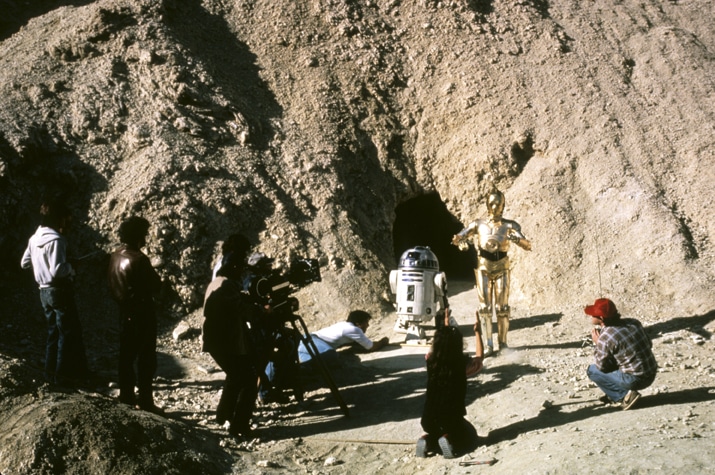
(Courtesy of Wikimedia Commons)
RELATED: Look Familiar? 25+ CLASSIC Movies Filmed In The National Parks
George Lucas Didn’t Think The Film Would Be A Success
It wasn’t until the film’s theatrical re-release in 1981 that it received the Episode IV marking and the subtitle: A New Hope.
As Lucas explained at a Tribeca Film Conference in 2015, he didn’t think the film would be a success so he wasn’t anticipating a film series. Think again!
The Stars Wars film which launched the entire series introduces us to Luke Skywalker in Death Valley National Park.
Death Valley was selected to replicate the rugged landscape of the desert planet Tatooine, the home of Luke Skywalker. If you remember, this is where Luke was taken as an infant to live with his aunt and uncle.
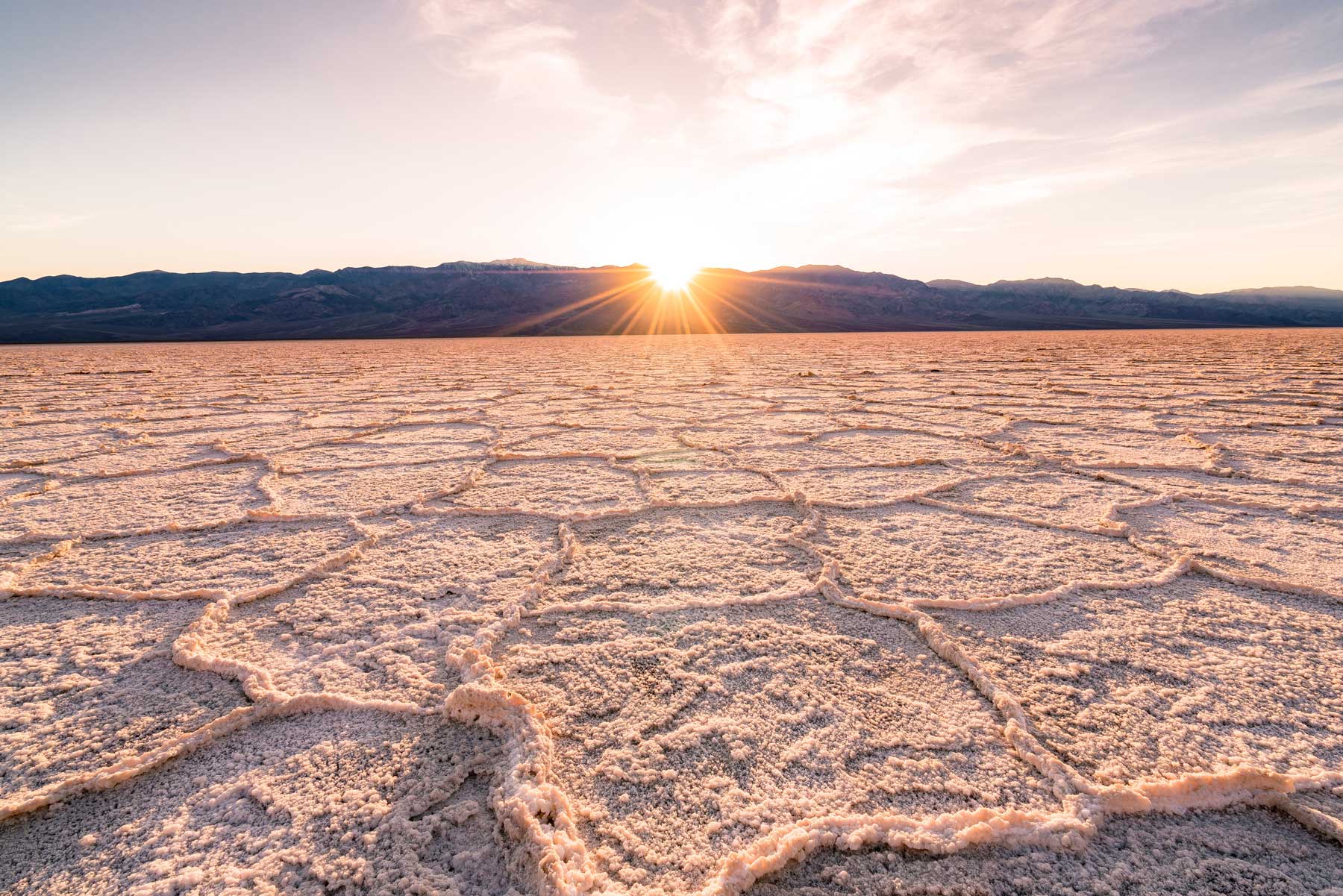
Scenes from episode six, Return of the Jedi, were also be filmed in Death Valley, too, as well as Redwood National Park where the forest moon of Endor was based.
With its desert landscape and stunning sand dunes, Death Valley is one place that truly does appear to be out of this world.
Now Here’s A Fun Fact
Long before animatronics, Muppeteer Frank Oz originally planned to dress up a real monkey in a Yoda costume and mask.
It turns out that a crew member had worked on 2001: A Space Odyssey. He pointed out that the apes they used in that movie’s opening were a huge headache.
This was enough to convince George Lucas to get rid of the Yoda monkey. Much to learn they still had.
Death Valley Has Been Used As A Backdrop In Countless Other Films
Stars Wars was not the only film to make use of the magnificent scenery of Death Valley. Countless other films and television series have filmed there too.
I have tried counting the number of films and quit when I got to fifty. And, I hadn’t even gotten to the middle of the alphabet yet.
Some of the more memorable films to have been made there include: Greatest Story Ever Told, Jonathan Livingston Seagull, King Solomon’s Mines, One Eyed Jacks, Return of the Jedi (not to mention the original Star Wars film–A New Hope), Robinson Crusoe On Mars, Spartacus, Tarzan, and Zabriskie Point.
If you haven’t heard of any of these films then you don’t watch enough movies! Might I recommend Turner Classic Movies?
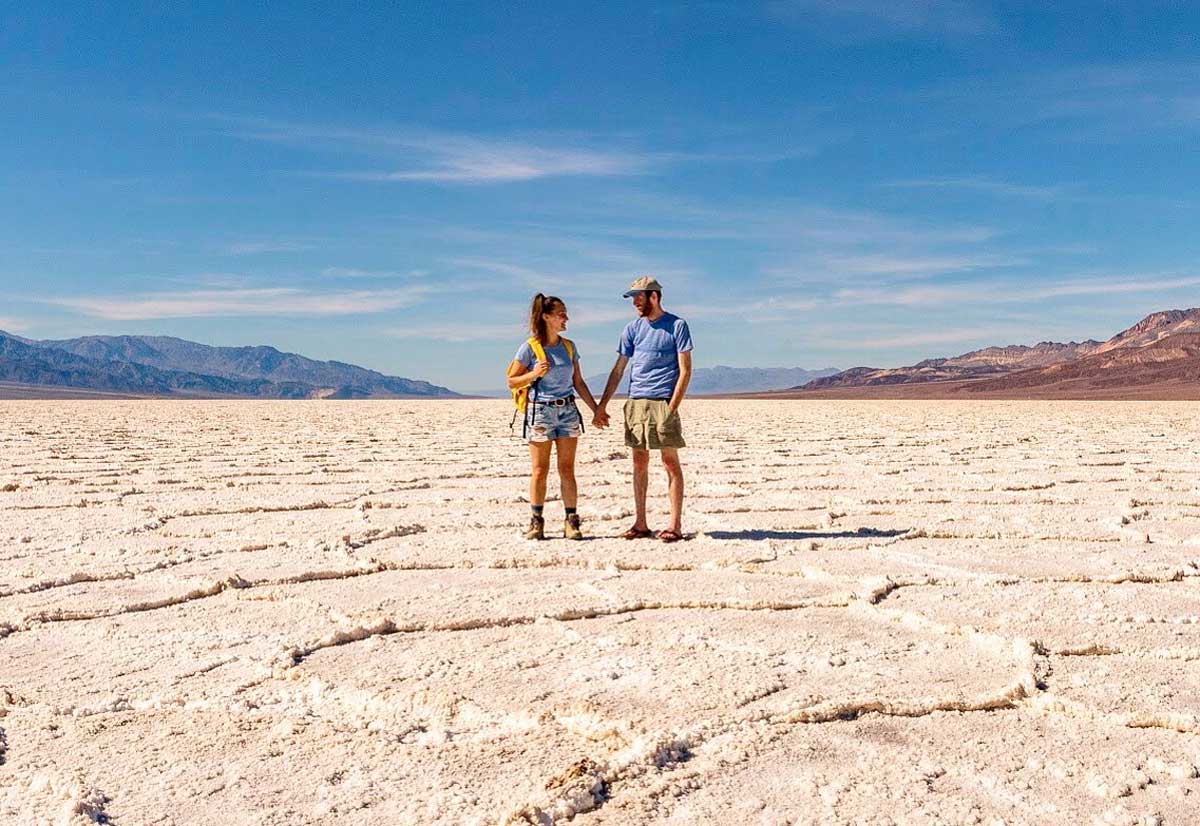
And Television Too
If you prefer television to movies then you should know that, in addition to Death Valley Days, the iconic science fiction television series The Twilight Zone filmed portions of two of its episodes in Death Valley.
If you’re a fan of this amazing series, the two episodes in question were The Lonely (1959) and I Shot An Arrow Into The Air (1960). Both episodes were filmed at Zabriskie Point and Desolation Canyon.
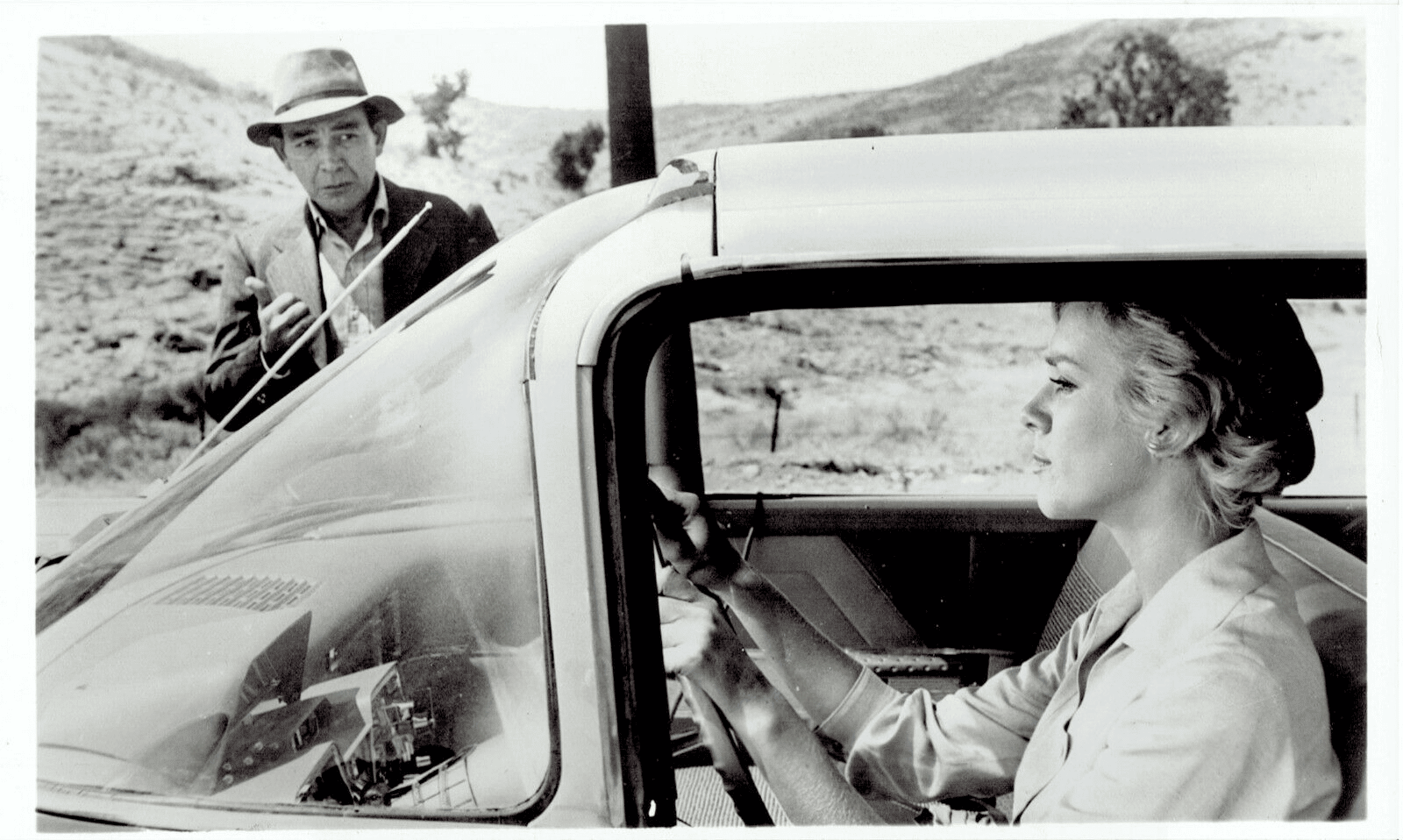
RELATED: Look Familiar? 10+ CLASSIC Television Shows Filmed In The National Parks
13. Death Valley Has 52 Different Types Of Wildlife
You would think that Death Valley doesn’t support wildlife. And you would be wrong. And this may be the most remarkable of all of the Death Valley National Park Facts.
Believe it or not, are actually fifty-two different types of wildlife in the valley. These include smaller species such as squirrels, bats, chipmunks, mice, rats, gophers, rabbits and foxes.
They also include larger species as well. You can find bighorn sheep, bobcat, burro, coyote, bobcat, mountain lion and mule deer.
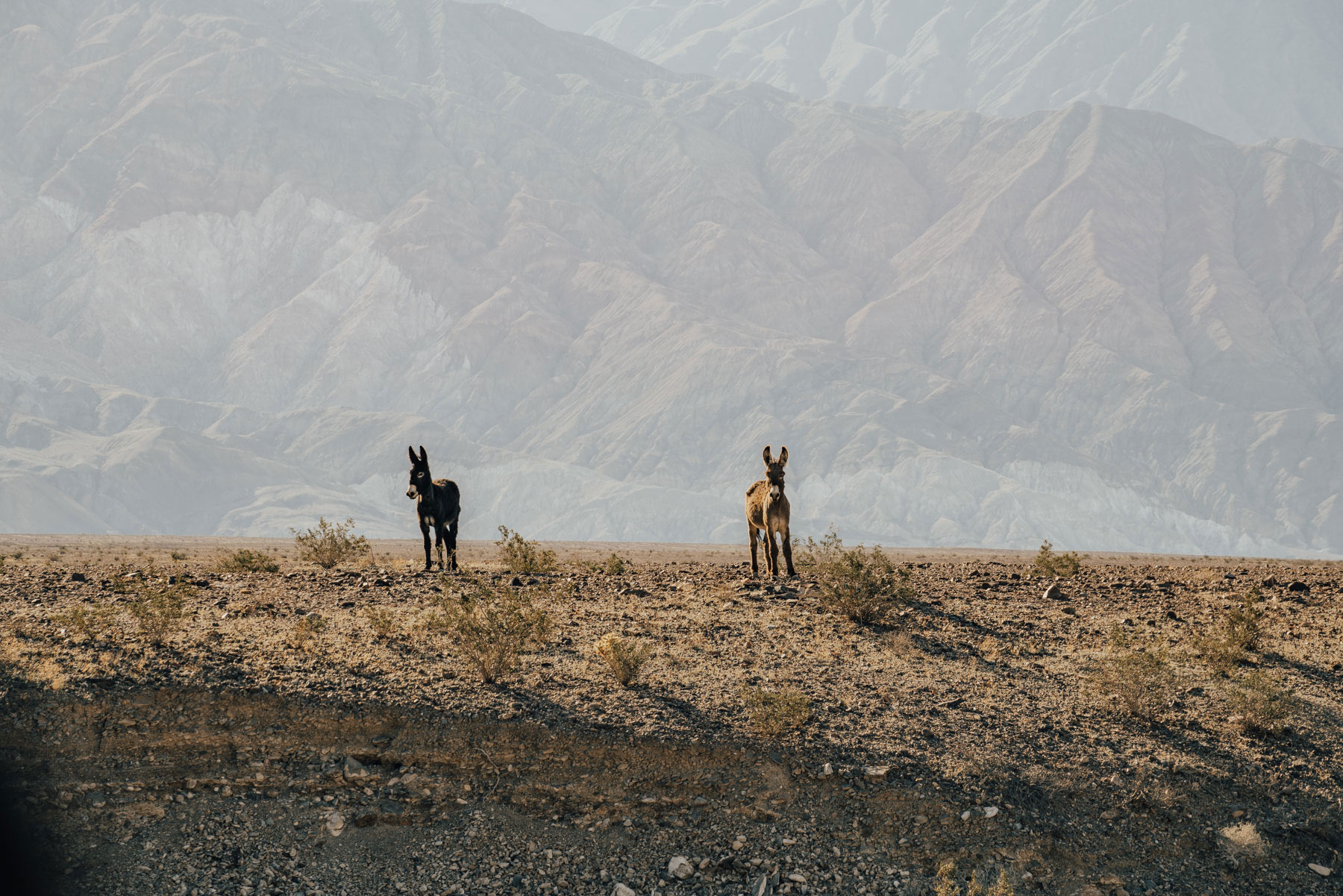
14. Death Valley Has Wildflowers Which Actually Bloom There
Another of the extraordinary Death Valley National Park Facts is that Death Valley, despite being is one of the driest places on the planet, actually has wildflowers.
Not only that, but there’s actually a superbloom, which occurs once every ten years. During this phenomenon, the desert landscape is painted with yellow, pink, and purple flowers. It’s simply stunning!
You can also see sunflowers, phacelia, desert gold, gravel ghost, Bigelow monkeyflower, desert thorn, desert sage, poppies, and other wildflowers which flourish in this desert climate.
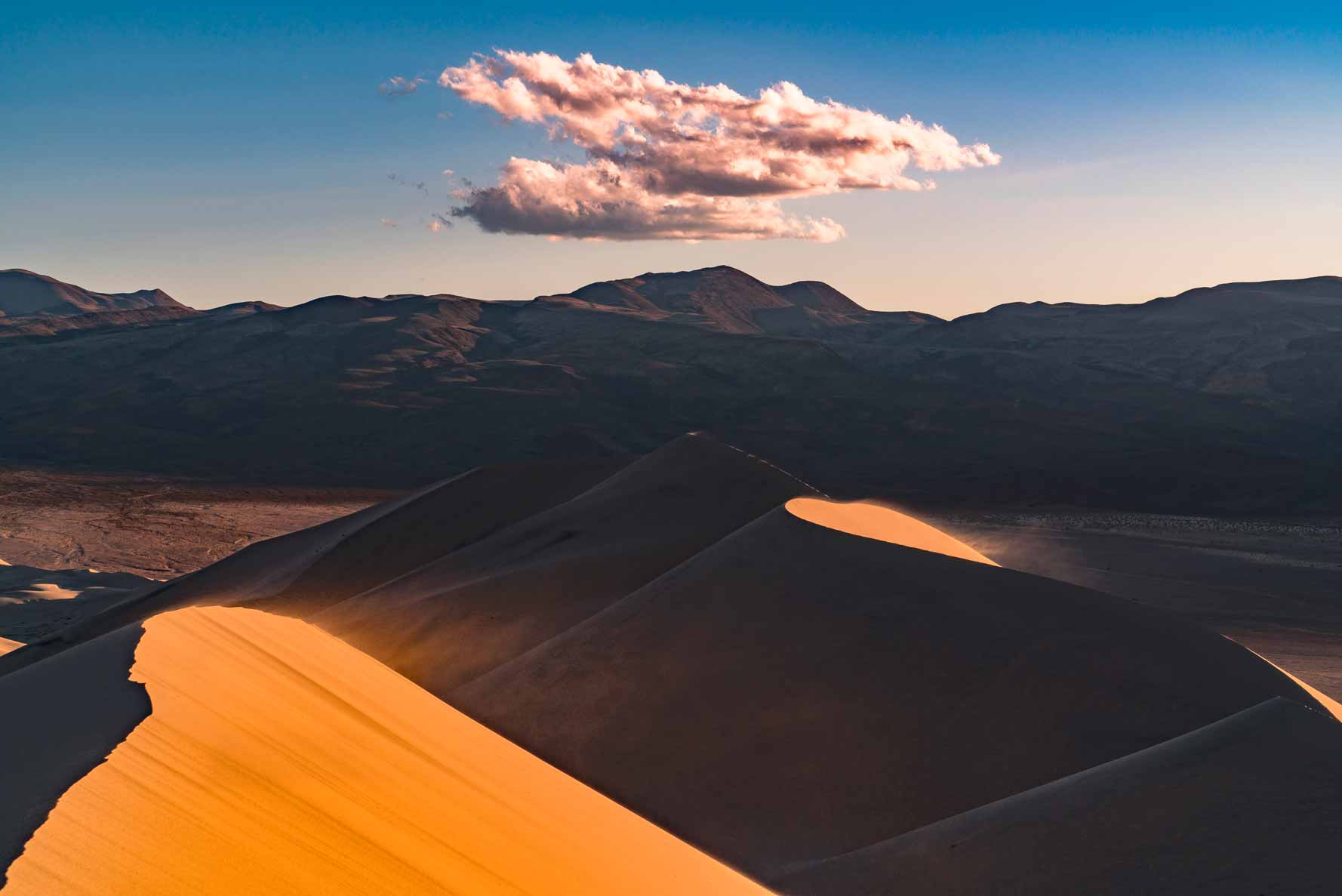
The Blooming Season
The blooming season typically lasts from mid-February through June or mid-July, reaching its zenith in March and April.
If you’re looking to see them, between late February and early April, you can spot flowers on lower elevations, including Badwater Road, Green Valley Road, Death Valley Road, and Titus Canyon Road.
From early April to early May, flowers can be seen on the higher elevations which include: Jubilee Pass, Zabriskie Point, Furnace Creek, and Daylight Pass.
15. Death Valley Has A Golf Course Where Only The Devil Can Play
Just when you thought we couldn’t come up with any more unbelievable Death Valley National Park Facts we’ve come up with another one. Death Valley features its own golf course – the Devil’s Golf Course.
It’s an immense area of rock salt eroded by wind and rain into jagged spires. So incredibly serrated that “only the devil could play golf on such rough links.”
If you listen carefully, you can hear the tiny pops of billions of tiny salt crystals expanding and contracting in the heat.
The sculpted salt formations form a rugged terrain that is simultaneously delicate yet dramatic. Make sure to bring your camera along to capture the land’s beauty formed through hundreds of years of nature’s processes.
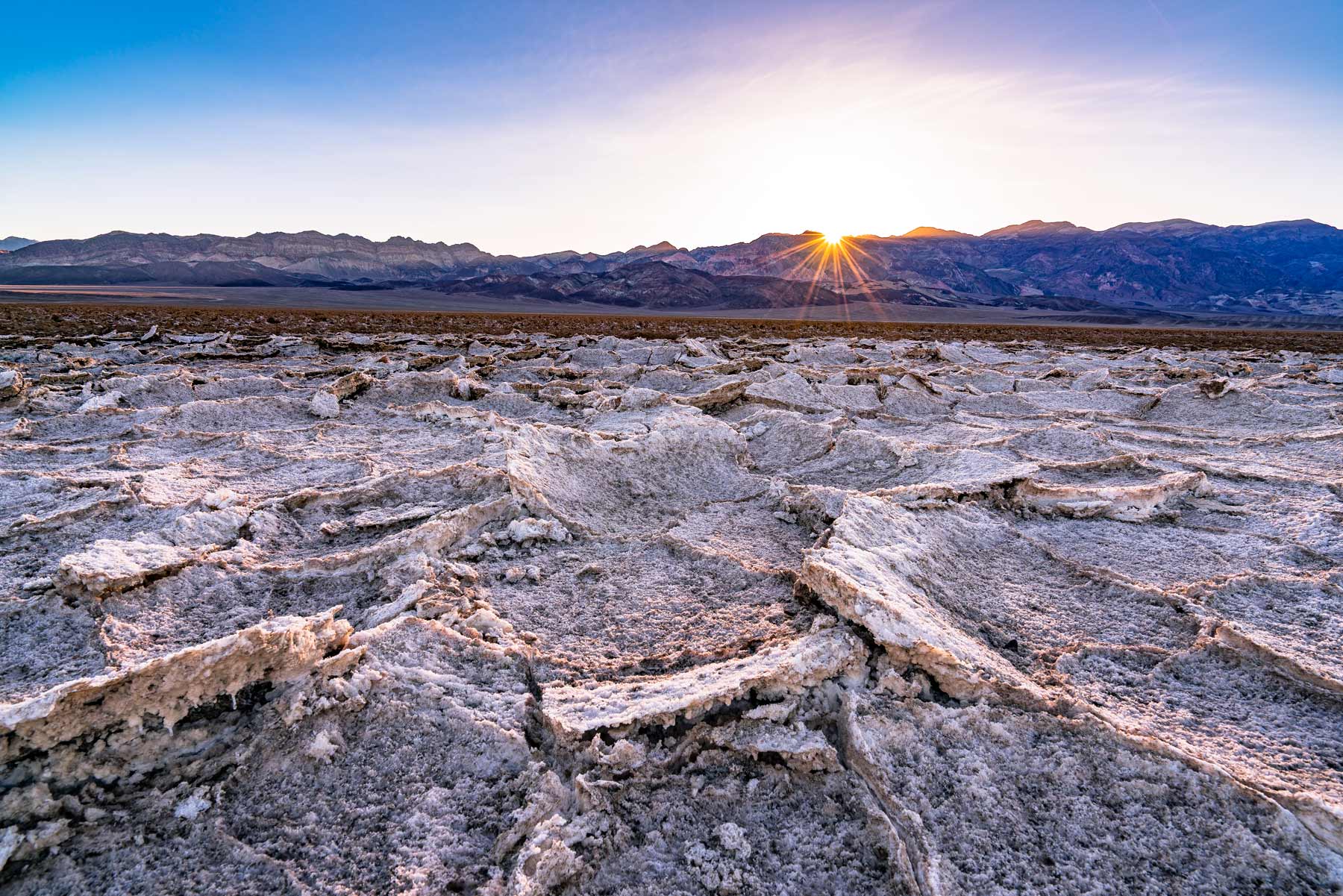
Check Out Our Stunning Death Valley Film
More Than Just Parks is the only place you can go to find expert guides, beautiful photos, helpful tips, breathtaking films and so much more.
In the remote far reaches of the Mojave Desert lies the largest national park in the continental United States. Hidden here in the hottest place on earth is another world full of diverse life and colorful landscapes. Join us as we take life to the extreme and explore Death Valley. Filmed primarily in 8K.
To make this film we spent weeks in California’s (& Nevada’s) Death Valley National Park, mostly in February and March when the temperatures are more manageable. We traversed hundreds of miles hiking most of the parks trails to capture the park like never before.
As the largest park in the contiguous United States, Death Valley is massive – over 3 million acres! We visited destinations like: Eureka Dunes, The Racetrack Playa, Mesquite Dunes, Zabriskie Point, Charcoal Kilns, Aguereberry Point, Badwater Basin, Darwin Falls, and more.
RELATED: To learn more about one of America’s most fascinating national parks, check out our guide to Death Valley National Park.
Why Trust Us About Death Valley National Park?
We’re Jim Pattiz and Will Pattiz, collectively known as the Pattiz Brothers (and sometimes the Parks Brothers) and we absolutely LOVE the national parks.
You should probably know that we don’t just make this stuff up out of thin air. We’ve spent our entire adult lives exploring and filming America’s national parks and public lands.
We’ve worked with the National Park Service, the Department of Interior, USDA, and the U.S. Forest Service for years creating films on important places and issues. Our work has been featured in leading publications all over the world and even some people outside of our immediate family call us experts on the national parks.

Meet The Parks Brothers
Map Of Death Valley National Park
List of Facts About Death Valley National Park
- Death Valley Was Inhabited By Native Americans
- A Famous Explorer Visited Death Valley
- Death Valley got its name from a group of lost goldminers
- Death Valley Has Its Own Castle
- A Woman Suffragist Helped To Promote Death Valley
- Death Valley featured its own television series
- Death Valley is the lowest point in North America
- Death Valley is the largest national park in the contiguous U.S.
- The Park Has Its Own Airport
- Death Valley has the tallest sand dune in California
- Death Valley is typically the hottest place in America
- Death Valley was featured in the first Stars Wars film
- Death Valley Has 52 Different Types Of Wildlife
- Death Valley Has Wildflowers Which Actually Bloom There
- Death Valley Has A Golf Course Where Only The Devil Can Play
We Hope You’ll Follow Our Journey

Our goal here at More Than Just Parks is to share the beauty of America’s national parks and public lands through stunning short films in an effort to get Americans and the world to see the true value in land conservation.
We hope you’ll follow our journey through the parks and help us to keep them the incredible places that they are. If you’re interested joining the adventure, sign up below!
Related Links
California National Parks: 20 BEST California National Parks Ranked
Los Angeles: 7 Epic National Parks Near Lost Angeles You’ll Love
San Diego: 7 Amazing National Parks Near San Diego
Redwood: Redwood National Park
San Francisco: 8 Best National Parks Near San Francisco
Death Valley: Death Valley National Park
San Jose: 7 Best National Parks Near San Jose
Pinnacles: 10 Epic Things To Do At Pinnacles National Park
Historic Sites: 15 Must-See Historic Sites In California
National Parks: All 63 National Parks Ranked By Experts
National Monuments: Ultimate List Of National Monuments
Landmarks: 25 Famous Bucket List Landmarks In America (MUST-SEE)
Park Rangers: A Brief (& Informative) History Of America’s National Park Rangers
Gifts: 50 BEST National Park Gifts For The National Park Fan In Your Life
Books: 45 BEST National Parks Books
Revolutionary War Sites: 10 BEST Revolutionary War Sites In America
Civil War Sites: 10 BEST Civil War Sites In America
Civil Rights Sites: 10 BEST Civil Rights Sites In America
National Parks In Movies: Look Familiar? 25+ CLASSIC Movies Filmed In The National Parks
death valley national park facts, death valley facts, death valley national park facts, death valley facts, death valley national park facts, death valley facts, death valley national park facts, death valley facts, death valley national park facts, death valley facts, death valley national park facts, death valley facts, death valley national park facts, death valley facts, death valley national park facts, death valley facts, death valley national park facts, death valley facts, death valley national park facts, death valley facts, death valley national park facts, death valley facts, death valley national park facts, death valley facts, death valley national park facts, death valley facts,

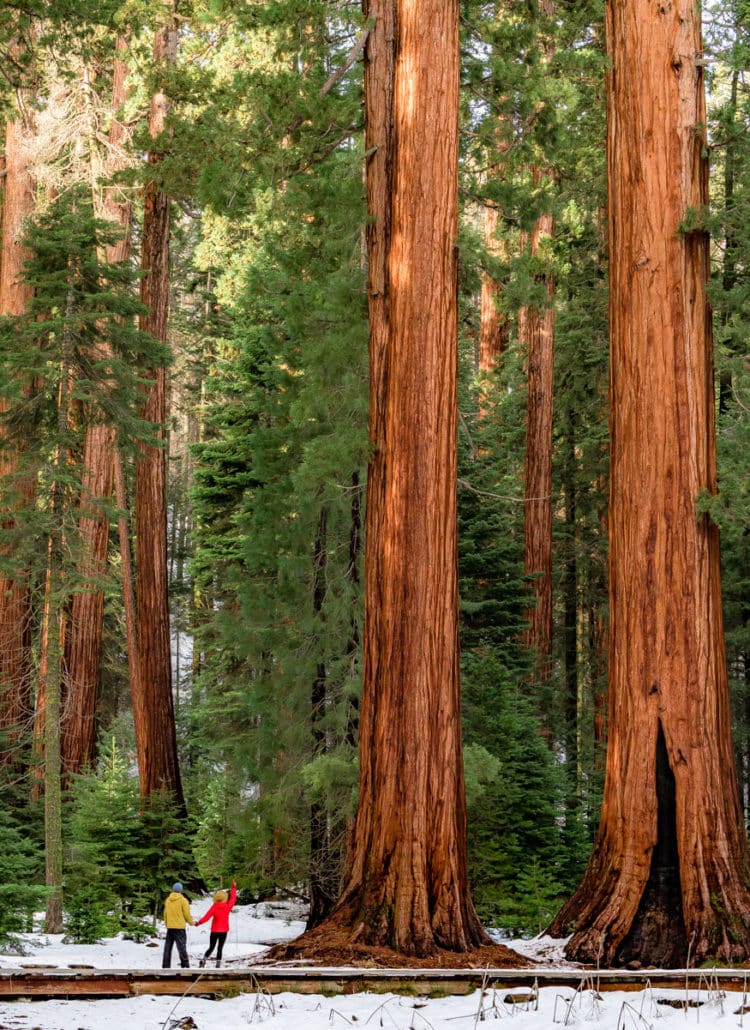

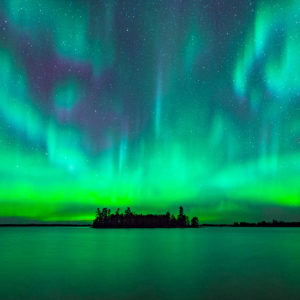

Leave a Reply